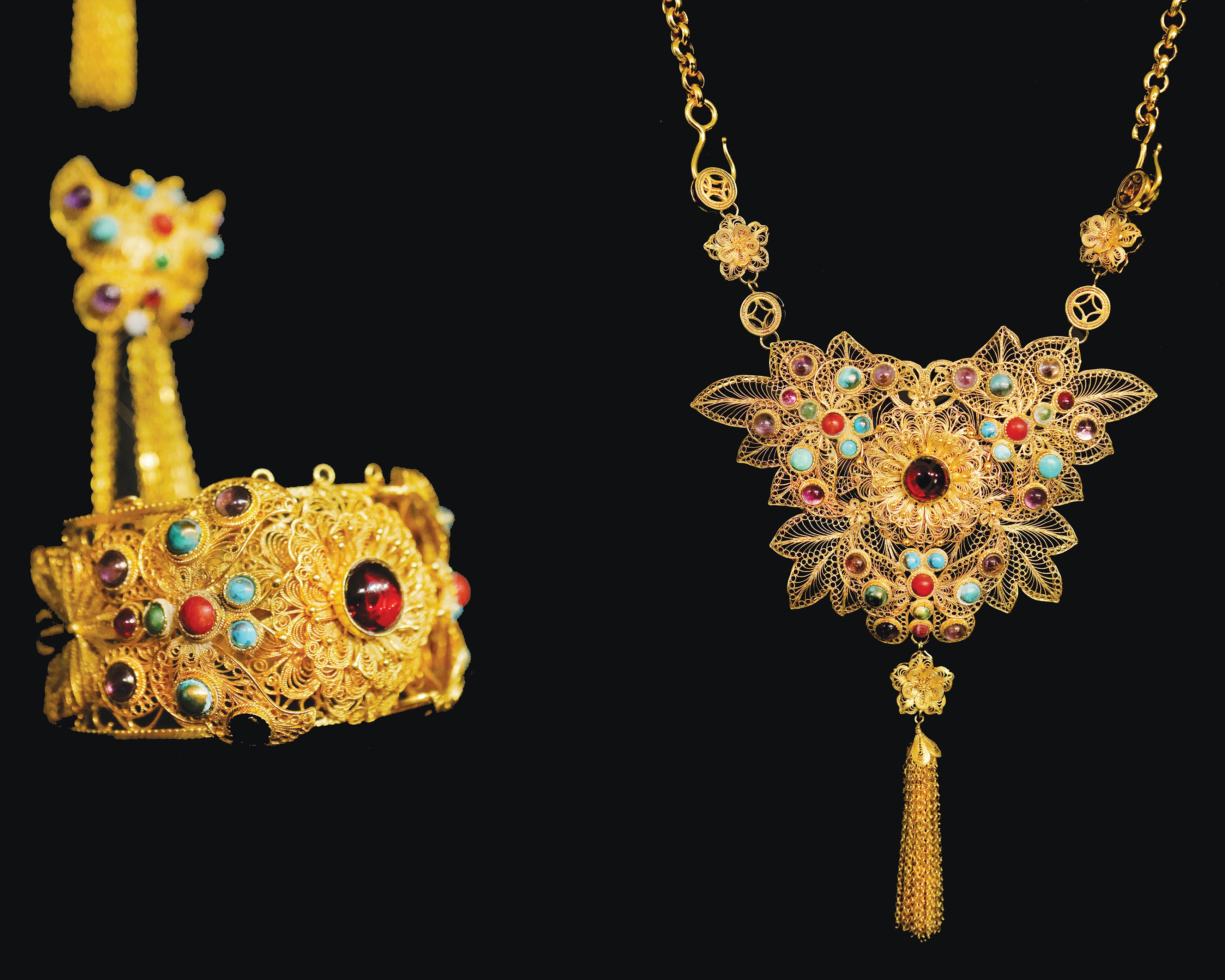Jewellery designer lights up London with filigree inlay pieces
THE ARTICLES ON THESE PAGES ARE PRODUCED BY CHINA DAILY, WHICH TAKES SOLE RESPONSIBILITY FOR THE CONTENTS

Imagine transforming gold and silver into threads as delicate as a strand of hair, meticulously knitting them into intricate lace that represents a blooming flower, with precious gems carefully inset onto the delicate petals — this is the art of filigree inlay, a traditional Chinese court jewellery technique also known as “fine gold art”.
Zou Xuewen, a young jewellery designer and inheritor of the filigree inlay technique, a designated intangible cultural heritage in China, has been introducing this ancient craft to the United Kingdom through workshops, lectures, and exhibitions.
“Many of today’s Western jewellery-making techniques have royal court origins and are employed by renowned brands such as Van Cleef & Arpels and Buccellati,” remarked Zou, who established her brand, Zoey Filigree, in 2021. “I aspire to showcase Chinese jewellery techniques to the world through my creations.”
In January, Zou unveiled a new collection featuring jewellery pieces that combine Chinese calligraphy characters meaning “today” and “faraway” with floral designs.
“It is an exploration of the balance between the practical and the ideal,” she explained, expressing her intention to incorporate more Chinese calligraphic characters into filigree jewellery.
Crafting a piece of jewellery with filigree inlay is a time-consuming process, taking months to complete. It involves a series of intricate steps such as nipping, plaiting, jointing, piling, filling, and knitting delicate gold or silver threads.
The history of filigree inlay dates back to China’s Warring States Period (475-221 BC). With advancements in techniques for creating thin gold and silver threads, the art matured during the Tang (618-907) and Song (960-1279) dynasties, reaching its zenith during the QingDynasty (1644-1911) .
Zou’s fascination with traditional Chinese filigree inlay jewellery began during a master’s programme in jewellery design in London that she began in 2018. Amid a curriculum focused on modern jewellery design, Zou found herself drawn to traditional techniques, discovering filigree inlay through an online video featuring Zhao Yunliang, an esteemed master of the technique in Beijing.
“When I got into the college, I wasn’t so sure what I liked so I studied different jewellery-making techniques on my own until I came across the filigree inlay in the online video,” she recalled.
In the video, Zhao, whose teachers inherited the technique from the Qing court’s jewellery studio, reflected his career such as his participation in making national jewellery presents in the 1990s and creating jewellery props for films.
“I was so impressed by the artisan spirit of the masters in passing on the centuries-old technique and wanted to study filigree inlay with him,” said Zou, adding that through several connections she finally got in contact with Zhao who was very pleased with her determination and agreed to take her as an apprentice in 2019.
Zou then suspended her study in London and went back to Beijing to learn the filigree inlay technique.
“But the technique was much harder to learn than I imagined. I started from making the gold thread, which is so thin that a small mistake in soldering could ruin one week’s work,” recalled Zou.
Zou achieved the status of intangible heritage inheritor of the filigree inlay technique in 2022 with the first of her major works — a set of filigree inlay jewellery called Fang Fei Ji, including a ring, a bracelet and a necklace, which draws inspiration from the traditional Chinese motif of flower and butterfly.
The jewellery piece participated in the London Design Festival in 2022 and Milan Fashion Week in 2023, during which Zou’s jewellery garnered the interest of many people in the exhibition, and she then opened a workshop providing courses and experience in jewellery-making for the public at the workspace for creative entrepreneurs at Hotel Elephant in London.
To make the ancient skill more accessible to modern tastes, Zou incorporates modern designs and techniques into her workshops, teaching customers enamel and lacquer bead jewellery techniques.
Subscribe to Independent Premium to bookmark this article
Want to bookmark your favourite articles and stories to read or reference later? Start your Independent Premium subscription today.